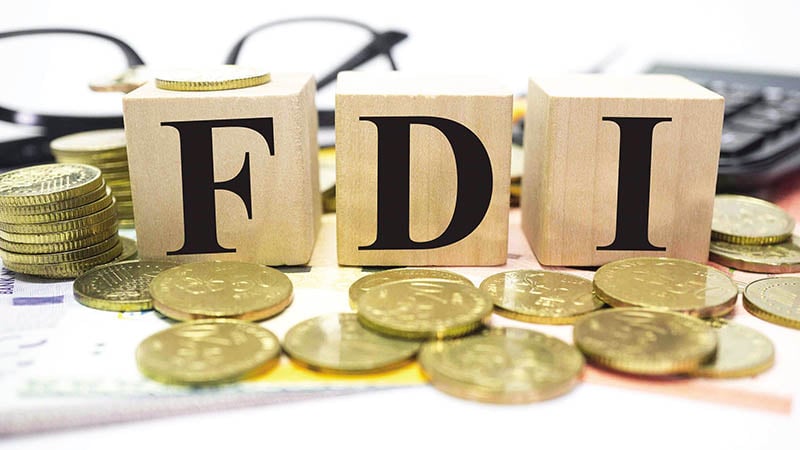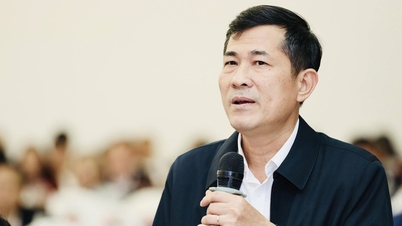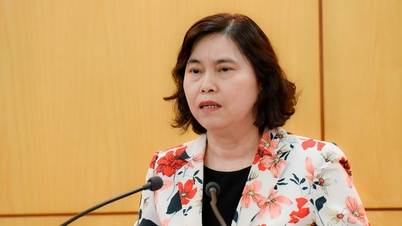 |
| Mr. Rizwan Khan, CEO of Acclime Vietnam. |
Restructuring global investment paves the way for Vietnam.
Global capital flows are shifting once again. As major economies prioritize domestic production, international investors are beginning to reassess where to place their trust. They are not only looking for the lowest costs, but also for markets with stability, institutional credibility, and long-term value. Vietnam is increasingly becoming a focal point in that selection. Vietnam's proven manufacturing base is fundamental, but the next phase of growth will depend on value rather than output—that is, how far Vietnam can go from a "factory" to an "innovative and reliable partner."
The US's "reciprocal tax" policy, along with the possibility of developed economies like Europe and Japan adopting similar measures, is more than just a tax change. It represents a strategic shift as developed countries tighten high-tech supply chains and rebuild domestic production capacity. For Vietnam – an export-oriented economy – this is both a test and an opportunity to reshape FDI flows in the coming period.
According to the UNCTAD (United Nations Conference on Trade and Development) Global Investment Report 2025, FDI into Europe decreased by 58%, while Southeast Asia increased by 10%, reflecting the trend of rebalancing global supply chains. In Vietnam, registered FDI capital in the first nine months of 2025 reached US$28.54 billion, an increase of 15.2% year-on-year; disbursed capital reached US$18.8 billion, the highest level in five years. However, newly registered capital decreased by 8.6%, indicating that investors are becoming more cautious, focusing on efficiency, resilience, and sustainability rather than massive expansion. Meanwhile, capital for expanding existing projects increased by 48% and capital contributions and share purchases increased by 35%, reflecting the long-term but more selective confidence of investors.
These changes are reinforced by new global policies. Global minimum tariffs and a host of new trade agreements are forcing multinational corporations to reassess their production chains and cost structures. As traditional tax incentives diminish, Vietnam's competitive advantage will depend more on institutional quality, transparency in governance, and non-tariff support mechanisms, such as access to industrial land, high-quality infrastructure, streamlined licensing processes, and a skilled workforce. These will be key factors in helping Vietnam maintain its position in the race to attract investment in Asia.
Stricter global trade standards are not only binding but also open opportunities for economies that adapt quickly and flexibly. As the US, EU, and China simultaneously raise requirements for quality, transparency, and sustainable development, Vietnam can turn compliance into a competitive advantage by upgrading production standards and increasing domestic value.
For example, Mexico's decision to impose import tariffs on more than 1,400 items has inadvertently created an advantage for Vietnam – a CPTPP member country – which enjoys preferential tariffs and flexible rules of origin. As a result, many corporations are shifting production to Vietnam to diversify their supply chains and reduce geopolitical risks.
Global changes are most evident in industrial parks and export processing zones, where Vietnam is shifting its focus from “scalability” to “quality improvement.” After more than a decade of leading growth through manufacturing, Vietnam’s industrial parks are entering a phase of transformation towards a green, smart, and high-tech model, in line with the National Green Growth Strategy.
Recent legal reforms, particularly Law No. 57/2024/QH15 and Decree 182/2024/ND-CP, have simplified licensing procedures, added incentives for high-tech projects, and provided support of up to 50% of R&D or infrastructure investment costs. Simultaneously, tax incentives and reduced land use fees are offered to facilities that achieve "green" certification.
Ho Chi Minh City is leading this trend. With 66 existing zones covering 27,000 hectares and plans to expand to 105 zones by 2050, the city is piloting the transformation of five major zones – Tan Thuan, Hiep Phuoc, Tan Binh, Cat Lai, and Binh Chieu – into integrated eco-industrial parks encompassing logistics, R&D, and support services. From now until 2030, Ho Chi Minh City aims to attract $21 billion in new FDI, focusing on green industries, digital technology , and smart manufacturing.
 |
| In the first three quarters of 2025, registered FDI capital into Vietnam reached US$28.54 billion, an increase of 15.2% compared to the same period in 2024. |
Strategic direction to maintain competitiveness
The year 2025 ushers in a new era of development, with the goal of Vietnam becoming a high-middle-income industrialized country by 2030 and a high-income developed country by 2045. The government has identified the "Four Pillars" as the foundation for reform, comprising Resolution 57-NQ/TW on digital transformation and science and technology; Resolution 59-NQ/TW on international integration; Resolution 66-NQ/TW on institutional reform; and Resolution 68-NQ/TW on the development of the private economy.
In particular, Resolution 68-NQ/TW is considered a turning point as it guarantees private enterprises three core rights: access to markets, resources, and property ownership, laying the foundation for an equal, stable, and rule-of-law-based investment environment between domestic and foreign investors.
The reform program is implemented through three pillars: institutional and administrative efficiency, infrastructure modernization, and the development of science, technology, and human resources.
Firstly, in terms of institutions, Prime Minister Pham Minh Chinh directed ministries and agencies to cut at least 30% of business conditions, shorten processing times by 30%, and expand the electronic one-stop system in investment, taxation, and customs. Fiscal reform was accelerated with a domestic minimum tax mechanism in line with OECD standards and investment incentives focused on research and development, clean energy, and digital transformation. This represents a shift from a "request-and-grant" model to a "service-and-supervision" model, creating a foundation for long-term investor confidence.
Secondly, regarding infrastructure, Vietnam is accelerating a series of key national projects such as the North-South expressway, coastal roads, Cai Mep-Thi Vai port, Long Thanh airport, railway lines, and urban metro systems, following a decentralized model that separates land acquisition from construction. This approach both shortens project timelines and opens up new industrial and urban development corridors.
Thirdly, regarding science, technology, and human resources, the Government considers these key pillars of the new growth model. Vietnam aims to train 100,000 engineers in semiconductor and AI fields, promote university-business cooperation, and develop an innovation ecosystem. According to WIPO, Vietnam's Global Innovation Index 2025 ranks 44th out of 139 countries and territories, demonstrating significant progress in technological capabilities. Simultaneously, reforms to the administrative apparatus and anti-corruption efforts have streamlined the system by 32%, saving tens of trillions of dong in recurrent expenditures, and strengthening a more transparent and accountable investment environment.
Priority areas in the new growth cycle
Global capital flows are shifting towards sectors that combine innovation, green development, and supply chain resilience; Vietnam's next phase of growth will depend on positioning itself correctly in these areas.
Semiconductor and high-tech manufacturing are emerging as strategic priorities. With expanding investments from Intel, Samsung, Amkor, and plans from NVIDIA and many other corporations, Vietnam is gradually becoming an important link in the global chip supply chain.
Renewable energy and green technologies are the new drivers of growth. Vietnam is asserting its position as a green growth hub in Asia, thanks to its strong commitment to ESG, the PPA guarantee mechanism, the Power Development Plan VIII, and the National Green Growth Strategy. Alongside this, the eco-smart industrial park model is attracting investors focused on sustainable development.
Healthcare and pharmaceuticals are sectors with immense potential. Rising healthcare demand, coupled with more flexible licensing policies, is attracting long-term investment in biotechnology, pharmaceutical manufacturing, and medical devices. Following the pandemic, many multinational corporations have begun localizing production to ensure supply chain security.
Logistics and smart infrastructure continue to play a crucial role. As exports and e-commerce grow rapidly, investments in seaports, airports, highways, and digitized warehousing systems are helping to reduce logistics costs and enhance export competitiveness.
Ultimately, the digital economy and financial innovation are becoming the new pillars of growth. With plans to build international financial centers in Ho Chi Minh City and Da Nang, along with a dynamic fintech ecosystem supported by AI, cloud computing, and a legal sandbox, Vietnam is laying the groundwork for a modern digital economy.
However, beyond the numbers, the most important thing is how quickly Vietnam adapts. In a world reshaping trade and taxation, opportunities only come to countries that know how to “do better, not just do more.” This means substantive reforms, investing in people, and focusing on long-term value – where Vietnam is not just a destination for capital, but a place where capital stays and grows together.
Source: https://baodautu.vn/trien-vong-fdi-cua-viet-nam-trong-boi-canh-dich-chuyen-toan-cau-d424310.html






![[Photo] Prime Minister Pham Minh Chinh presides over a meeting on private sector economic development.](/_next/image?url=https%3A%2F%2Fvphoto.vietnam.vn%2Fthumb%2F1200x675%2Fvietnam%2Fresource%2FIMAGE%2F2025%2F12%2F20%2F1766237501876_thiet-ke-chua-co-ten-40-png.webp&w=3840&q=75)
![[Photo] Prime Minister Pham Minh Chinh presides over the conference announcing the establishment of the International Finance Centre in Vietnam.](/_next/image?url=https%3A%2F%2Fvphoto.vietnam.vn%2Fthumb%2F1200x675%2Fvietnam%2Fresource%2FIMAGE%2F2025%2F12%2F21%2F1766309817714_ndo_br_dsc-3400-jpg.webp&w=3840&q=75)

































































































Comment (0)